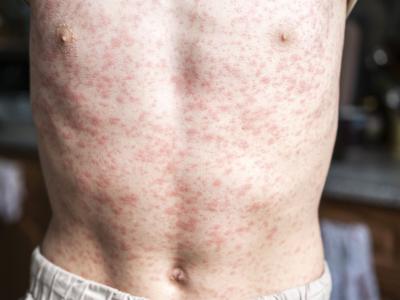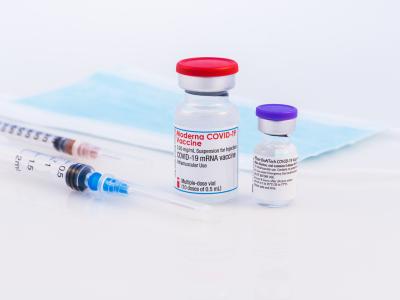Compliance with treatment protocols may speed MRSA clearance
A new study has found that better compliance with treatment protocols can lead to quicker clearance of soft skin and tissue infections caused by methicillin-resistant Staphylococcus aureus (MRSA).
The study, published in Infection Control and Hospital Epidemiology, was a randomized, controlled trial conducted among members of 223 households affected by community-onset MRSA, which can be commonly transmitted among household members. The trial split the families into three groups: One group received only education on personal and household hygiene, a second received education along with decolonization treatment (consisting of a topical antibiotic ointment and an antiseptic body wash) and daily reminders, and a third received education with treatment but no reminders.
At the end of the trial, the researchers found that there was no significant difference in the time it took the MRSA infections to clear between the group that received education only and the groups that received treatment. But on a secondary analysis, they found that in the households that were 100% compliant with treatment protocols and decolonization strategies, the bacteria cleared more quickly than it did in non-compliant households (23 days compared with 27 days).
The researchers said their findings indicate clinicians treating patients with skin and soft tissue MRSA infections should emphasize the importance of full compliance with decolonization treatment, but also spend time educating patients on good hygiene measures, which can reduce household spread.
Jul 28 Infect Control Hos Epidemiol study
Jul 28 Society for Healthcare Epidemiology of America news release
MRSA carries economic burden in pneumonia patients
A research team in Japan reported that infection with MRSA carries a high cost. The team reported their findings on the clinical and financial impacts of MRSA infections in patients hospitalized with community-onset pneumonia in the American Journal of Infection Control.
Using data from a nationwide administrative claims database, the researchers analyzed pneumonia patients at 1,063 acute care hospitals in Japan, comparing 634 patients who received anti-MRSA drugs against a control group of 87,427 patients. Adjusting for risk, they found that patients who received anti-MRSA medications had longer hospital stays (21 days vs. 14 days), spent more on antibiotics ($756 vs $172), and had higher hospital costs ($8,741 vs. $5,063).
The researchers say the findings should spur further research on the quantitative effects of multi-drug resistant bacterial infections on healthcare resources, and could inform future policies.
Jul 27 Am J Infect Control study
Hong Kong hospital screening finds MCR-1 in patient samples
Originally published Jul 28.
Screening of 1,427 bacterial isolates collected from patients in a large Hong Kong hospital during roughly 1-month period in December 2015 yielded 5 that were positive for MCR-1, a gene linked to resistance to colistin, a last-line antibiotic. A team from Hong Kong reported their findings yesterday in a letter yesterday to Emerging Infectious Diseases.
They focused their screening on Enterobacteriaceae and Acinetobacter species, with samples coming from blood, urine, stool, the respiratory system, wounds, and other sterile and nonsterile body fluids, tissues, or swabs.
Of the five that were positive for MCR-1, one was in Enterobacter cloacae and four were in Escherichia coli. Two were from blood cultures of patients with biliary tract infections, one was from a mid-stream sample from a patient with symptoms of a urinary tract infection, and two were from stool samples collected from asymptomatic patients.
Genetic testing showed a 100% match to MCR-1 previously identified in an E coli sample from a Chinese pig farm. One of the patients had lived in China before hospital admission, and one had undergone liver transplant in China. None had a history of colistin treatment.
All five samples with the MCR-1 gene were susceptible to carbapenem, but one of the E coli isolates from one of the patients showed extended-spectrum beta-lactamase (EBSL) activity.
The team noted that MCR-1 detection in the Enterobacteriaceae samples wasn't surprising because of previous findings in Chinese farm animals and retail meat. They noted, however, that finding the gene in E cloacae expands the species known to carry MCR-1.
Jul 27 Emerg Infect Dis report
Risk factors identified for patient-to-patient spread of dangerous superbug
Originally published Jul 27.
A new study has determined that there are three key factors that increase the risk for patient-to-patient transmission of carbapenemase-producing carbapenem-resistant Enterobacteriaceceae (CP-CRE), dangerous drug-resistant bacteria that tends to strike patients in hospitals and nursing homes who are on ventilators, require catheters, or are taking long courses of antibiotics.
The study, published Jul 25 in Infection Control Hospital & Epidemiology, found that 96% of patient-to-patient CP-CRE transmissions had at least one of the following risk factors:
- Contact for more than 3 days with an infected individual
- Mechanical ventilation
- Infection with another multidrug-resistant organism
The study was based on data from more than 3,000 adult patients screened for CP-CRE because they had been in contact with an infected patient from 2008 through 2012. Fifty-three of those patients tested positive for the pathogen.
"Identifying high-risk groups helps us to avoid excessive screening that can be risky and expensive, and to determine who should be screened and who might be a candidate for pre-emptive isolation or antibiotics," lead author Vered Schechner, MD, MSc, an infection control physician at Tel Aviv Sourasky Medical Center, said in a news release from the Society for Healthcare Epidemiology of America (SHEA), which publishes the journal.
The researchers also found that patients who were taking cephalosporin antibiotics were less likely to acquire the superbug than those taking other types of antibiotics. But when those patients were compared with patients receiving no antibiotics, cephalosporins did not appear to have a protective effect.
CP-CRE is a subset of CRE that produces an enzyme that breaks down carbapenems and related antimicrobials. According to the Centers for Disease Control and Prevention, CP-CRE strains have been targeted for prevention because it is believed they are behind the spread of CRE infections.
Jul 25 Infect Control Hosp Epidemiol study
Jul 25 SHEA news release
Multidrug-resistant Campylobacter coli cluster reported in Canada
Originally published Jul 27.
A team of researchers in Canada has documented a small outbreak of multidrug-resistant Campylobacter coli that occurred in Montreal in 2015.
The researchers say six men between the ages of 35 and 62 were diagnosed as having enteric C coli infections resistant to erythromycin, tetracycline, and ciproflaxin between Jan 14 and Feb 7 of 2015. The results of an epidemiologic and molecular investigation suggest the infection was sexually transmitted; the six men—whose cases were not linked to each other—were reported to be gay, and four of them reported having had unprotected sex in the week before symptom onset. Five of the men were HIV-positive. Food was not suspected to be the source of the infection.
Several of the researchers involved in the study wrote about a similar drug-resistant C coli cluster in Montreal in 2010-11. That cluster involved 10 patients and was also determined to involve sexual transmission.
The researchers say few C coli clusters have been reported, and that outbreaks caused by this Campylobacter species may be underestimated. They recommend that gay men be counseled about sexually transmitted infections, including the use of barriers during genital, oral, and anal sex.
The research was published yesterday in Emerging Infectious Diseases.
Jul 26 Emerg Infect Dis dispatch
May 2013 Emerg Infect Dis report on 2011-12 outbreak
FDA updates safety warnings for fluoroquinolones
Originally published Jul 26.
The Food and Drug Administration (FDA) has approved updated safety warnings for fluoroquinolone antibiotics.
The updated safety labels will now contain information about the risk of disabling and potentially permanent side effects associated with oral and injectable fluoroquinolones. Those side effects, which can occur in combinations hours to weeks after exposure to the antibiotics, involve tendons, joints, muscles, nerves, and the central nervous system.
In addition, the agency said that because of these side effects, the labels will say that fluoroquinolones should not be used to treat patients with acute bacterial sinusitis, acute exacerbation of chronic bronchitis, or uncomplicated urinary tract infections—unless patients with those conditions have no alternative treatment options. But fluoroquinolones are still considered a therapeutic option for more serious bacterial infections such as anthrax and plague.
The updated warning comes after an FDA safety review concluded that the risk of disabling and potentially permanent side effects associated with the antibiotics outweighed the benefits for patients with other treatment options. The agency had advised about those side effects in May but did not specify warning labels at that point.
The drugs receiving updated warnings include levofloxacin, ciprofloxacin, ciprofloxacin extended-release tablets, moxifloxacin, ofloxacin, and gemifloxacin.
Jun 24 FDA press release
May 12 CIDRAP News story on FDA safety warning
Nearly 60% of hospitalized patients given antibiotics for asthma
Originally published Jul 26.
Findings from a large retrospective study indicate that a significant percentage of patients hospitalized for asthma are receiving inappropriate treatment with antibiotics.
In a research letter published yesterday in JAMA Internal Medicine, US researchers reported that, out of 51,951 patients hospitalized with asthma in 2013 and 2014, 58.2% were treated with antibiotics at some point during their stay, despite the lack of any indication for antibiotic therapy. Roughly 40% were prescribed antibiotics on their first day. The most commonly prescribed antibiotics were macrolides, quinolones, third-generation cephalosporins, and tetracyclines.
The authors said the high rate of antibiotic treatment could be attributed to the difficulty of differentiating between bacterial and non-bacterial infections and distinguishing asthma from chronic obstructive pulmonary disease. But they also suggested that "gaps in knowledge" about the benefits of antibiotic therapy for asthma may play a role. The authors noted that current guidelines recommend against using antibiotics for exacerbations of asthma unless there is a concurrent infection.
"These findings suggest a significant opportunity to improve patient safety, reduce the spread of resistance, and lower spending through greater adherence to guideline recommendations," the authors said in the letter.
Jul 25 JAMA Intern Med research letter










